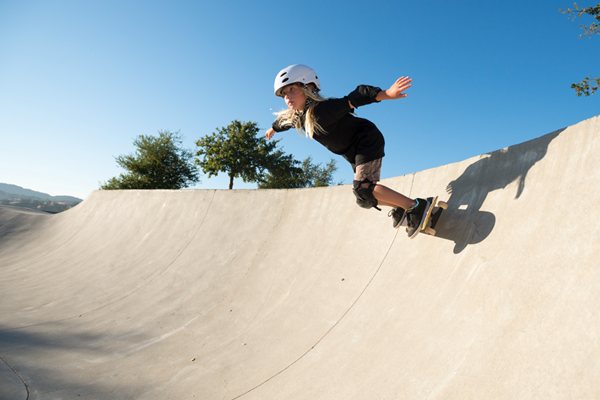The importance of risky play for childhood development
Summary:
Dr. Suzanne Beno co-authors a position statement from the Canadian Paediatric Society on the importance of risky outdoor play for physical, mental and social health.
For children and youth, risky play is the thrilling and exciting forms of free play that carry the uncertainty of outcome and a possibility of physical injury. Co-authored by Dr. Suzanne Beno, Medical Co-Director of the Trauma Program and Emergency Physician at The Hospital for Sick Children (SickKids), the Canadian Paediatric Society (CPS) has released a new position statement encouraging risky play to help improve physical, mental and social-emotional health in children and prevent common health problems such as obesity, anxiety and behavioural issues, while navigating the balance with injury prevention. The statement has since received national attention, shedding light on the benefits of risky play and providing tips for Canadian families, caregivers, and policymakers to create opportunities for risky play.
Risky play encompasses various activities, including:
Playing at height or with tools
Playing near potentially dangerous elements
Engaging in rough-and-tumble play
Exploration that might lead to getting lost
These activities are crucial as they offer rich opportunities for challenging and creative play, especially in outdoor settings that include natural materials. “When creating opportunities for risky play, it is important to note the difference between a risk and a hazard”, says Beno, Chair of the Injury Prevention Committee at CPS.
A risk involves a situation where a child can assess a challenge and decide their course of action based upon personal preference and self-perceived skills (e.g., how high to go on a climbing structure or how fast to run down a slope) while hazards are situations where the potential for injury is beyond a child’s capacity to recognize it as such or to manage it (e.g., an improperly anchored slide that could topple under a child’s weight, or a rotten tree limb that may break). This is where adults step in. By mitigating/eliminating hazards while supporting appropriate risk-taking, risky play enables children to develop essential risk management strategies.
Risky play has substantial benefits across various aspects of children's health, including their physical, mental, and social-emotional development. Physically, it increases activity levels and reduces sedentary time, contributing to lifelong physical literacy and possibly enhancing the immune system. Mentally, it supports resilience, problem-solving and conflict resolution, while socially, it fosters cooperation, communication and a sense of belonging.

Risky play tips:
- Consider supervising children less closely when they are in hazard-free environments.
- Ensure there is time in a child’s schedule for free play.
- Pause for 15–30 seconds to observe a child’s state of play before intervening.
- Help children problem-solve by using phrases that create a “teaching moment” by enquiring how a child is feeling during risky play and what their next actions will be.
Even though risky play has many benefits, there is a need to balance risk-taking with injury prevention. While injuries from risky play are often minor, it’s important to consider each individual child’s age, abilities and comfort levels to remove hazards and then empower them to make decisions regarding their own play. Risky play does not include ignoring evidence-based safety measures such as wearing bicycle helmets, leaving children unsupervised in potentially hazardous situations (e.g., street traffic), or pushing children beyond their comfort levels. The foundation of risky play is that it is child led and adult supported.
Facilitating risky play involves creating safe, supportive environments that encourage risk-taking, adjusting communication to foster confidence rather than fear and implementing policies and practices that prioritize children's health and development while ensuring safety. A balanced approach that emphasizes keeping children “as safe as necessary” rather than “as safe as possible” can help families shift their mindset towards encouraging risky play and benefitting from a healthy and active lifestyle.

Phrases that create a teaching moment during risky play:
- Do you feel... stable on that log of wood/the heat of that fire?
- Notice how... these rocks are slippery/this tool is sharp?
- Are you feeling... scared/excited/safe?
- How will you... get down/go up/go across?

